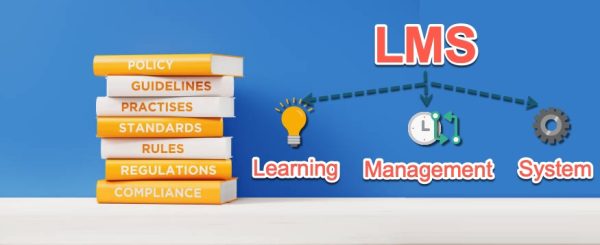Manage Compliance Training using an LMS
A Learning Management System (LMS) is an excellent tool for organisations big and small to manage their compliance training programs effectively and demonstrate that staff have been trained.

Companies across various industries are required to comply with regulations and laws that govern their operations. As such, businesses must implement training programs that help employees understand and adhere to these regulations. Compliance training is not just a legal requirement, but it’s also an essential way to ensure that employees are equipped with the knowledge and skills necessary to operate safely and effectively within their roles.
Managing compliance training can be a daunting task, particularly for organisations with large workforces. Learning management systems (LMS) like Totara have revolutionised the way organisations manage their mandatory training programs. In this post, let’s explore how organisations can use Totara LMS to manage their compliance training programs effectively, highlighting the benefits of using this platform for compliance training.
Page Contents
LMS Features for Managing Compliance Training
These 5 features are crucial to manage compliance training in any organisation:
Certification Management
Certification management enables organisations to create and assign certifications to their employees, set expiry dates, and notify employees of upcoming certification renewals. It also allows managers to monitor employee progress and ensure that all employees are up-to-date with their certifications, which is particularly important in industries with strict regulatory requirements. Certification management streamlines the process of managing compliance training by automating certificate tracking and renewal processes, reducing administrative work and improving the overall efficiency of compliance training programs.
Reporting and Analytics
Reporting and analytics are crucial for evaluating the effectiveness of compliance training programs. LMSs offer robust reporting capabilities that enable organisations to track employee progress, monitor compliance rates, and identify areas for improvement. These reports can be customised to meet the organisation’s specific needs, providing valuable insights into employee performance and training effectiveness. Reports can also be used to demonstrate compliance with regulatory requirements to auditors or regulators.
Automated Reminders
Automated reminders ensure that employees are reminded of upcoming training deadlines, reducing the risk of non-compliance. Reminders can be customised based on the organisation’s needs and set up to be delivered via email or app based notifications within the LMS. They can also be used to alert managers of training completion or non-compliance, enabling them to take appropriate action and improve the overall efficiency of the compliance training program.
Role-based Access
Role-based access allows organisations to grant access to specific training modules based on an employee’s role or job function. This ensures that employees receive the training that is most relevant to their job function and ensures that compliance training is delivered efficiently. Role-based access also simplifies the process of managing compliance training by automating the assignment of training modules, reducing administrative work and improving the overall efficiency of the compliance training program. Use audiences to manage cohorts – create such audiences either using dynamic rules or by selecting specific staff.
Multiple training methods
LMSs allow you to create training modules that could be online, virtual or classroom based (or a blended approach).
Don’t just use text to train your employees (or convert a slideshow to online learning). Make your mandatory learning programs more engaging by incorporating multi-modal learning: text, audio, video and imagery. And use scenario-based learning.
Don’t just use multiple choice questions; engage your audience even when seeking to analyse if your employee’s have understood the topics.
Here is a great example of what an engaging online learning module looks like. Difficult conversations in the workplace – employee course by FairWork Australia
Best Practices for Managing Compliance Training using an LMS
Managing compliance training using an LMS requires careful planning and execution to ensure that the training program is effective and efficient. Here are some best practices for managing compliance training using an LMS:
Clearly Define Training Goals and Objectives
It is essential to establish clear goals and objectives for the compliance training program. This involves identifying the specific regulatory requirements that need to be addressed and determining the skills and knowledge that employees need to acquire. Clear goals and objectives help ensure that the training program is focused and effective in achieving the desired outcomes.
Develop a Compliance Training Plan
A well-designed compliance training plan is critical to the success of the training program. The plan should include details on the training curriculum, training delivery methods, training schedules, and evaluation methods. A comprehensive plan ensures that employees receive the appropriate training and that the organisation meets regulatory compliance requirements.
Assign Roles and Responsibilities
Assigning roles and responsibilities is crucial to the success of the compliance training program. This involves identifying who will be responsible for delivering the training, managing the LMS, and monitoring employee progress. Clear roles and responsibilities ensure that everyone involved in the training program understands their role and what is expected of them.
Communicate with Employees
Effective communication with employees is essential to the success of the compliance training program. Employees need to be informed about the training program’s objectives, schedule, and expectations. Communication should be ongoing, and feedback from employees should be encouraged to ensure that the training program meets their needs and is relevant to their job functions.
Evaluate the Effectiveness of the Training Program
Evaluation of the compliance training program is critical to ensuring that the training program is effective and efficient. Evaluation involves analysing the results of the training program, identifying areas for improvement, and making necessary adjustments to the program. Regular evaluation ensures that the compliance training program remains up-to-date and relevant to the organisation’s needs and regulatory compliance requirements.
In conclusion, managing compliance training using an LMS requires careful planning, execution, and evaluation. Following these best practices can help organisations ensure that their compliance training programs are effective, efficient, and meet regulatory compliance requirements.
Recent Posts on Compliance Training

Totara LMS for Compliance Training
Importance of compliance training and using an LMS to manage it
In conclusion, using a Learning Management System (LMS) to manage compliance training offers several advantages. LMSs provide a centralised platform for creating, delivering, and tracking compliance training, making it easier to manage compliance training programs efficiently. With an LMS, organisations can ensure that employees receive the necessary training on time, and they can monitor employee progress and completion rates to ensure that all employees are up-to-date with their certifications and training requirements.
Moreover, an LMS can offer features like certification management, reporting and analytics, automated reminders, role-based access, and customisable workflows, which can streamline compliance training management and ensure that all employees receive relevant and personalised training.
In summary, managing compliance training using an LMS is crucial for organisations to ensure that they comply with regulatory requirements and keep their employees safe. It offers several advantages, such as centralising the training process, providing easy access to training materials, and tracking employee progress. By following best practices such as clearly defining training goals and objectives, developing a compliance training plan, assigning roles and responsibilities, communicating with employees, and evaluating the training program’s effectiveness, organisations can ensure that their compliance training programs are effective, efficient, and meet regulatory compliance requirements.


